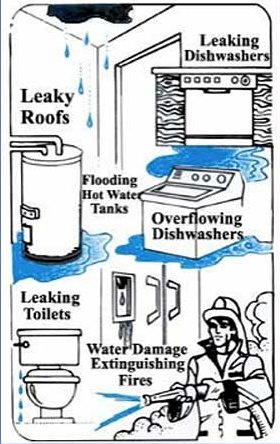Water damage can quickly become a homeowner’s worst nightmare, causing significant structural damage and potential health hazards. However, with the right knowledge and expertise, the effects of water damage can be minimized. In this comprehensive guide, we’ll explore advanced techniques in water damage mitigation, focusing on the importance of structural drying.
 Understanding Water Damage
Understanding Water Damage
Water damage can occur due to various reasons, including:
- Natural disasters: Hurricanes, floods, and heavy rains
- Plumbing failures: Leaky pipes, burst faucets, and clogged drains
- Human error: Accidental spills or overflowing appliances
When water seeps into structural components like walls, floors, and ceilings, it can lead to:
- Mold growth: Mold can start developing within 24-48 hours of water exposure, posing serious health risks.
- Structural damage: Prolonged water exposure can weaken the structural integrity of buildings.
- Electrical issues: Water can damage electrical systems, creating fire hazards.
- Material degradation: Wood, drywall, and insulation can degrade when exposed to moisture.
The Importance of Structural Drying
Structural drying is a crucial step in water damage restoration. It involves a systematic process of removing moisture from the affected areas to prevent further damage, such as mold growth and structural deterioration.
Key Steps in Structural Drying
- Assessment and Inspection: A thorough assessment is conducted to determine the extent of the damage, identify the source of water intrusion, and assess the affected materials.
- Water Extraction: Standing water is removed using submersible pumps or wet vacuums.
- Drying Equipment Setup: High-capacity dehumidifiers and air movers are strategically placed to facilitate moisture removal.
- Monitoring: Humidity and moisture levels are continuously monitored to ensure effective drying.
- Final Inspection: A final inspection is conducted to verify that moisture levels have returned to normal and there are no signs of mold growth.
Advanced Techniques in Structural Drying
- Thermal Imaging: Thermal imaging cameras help identify hidden moisture within walls and other structures.
- Desiccant Dehumidification: Desiccant dehumidifiers are effective in low-temperature environments, such as basements.
- Controlled Drying Methods: By manipulating temperature and humidity levels, the drying process can be accelerated.
- Rapid Structural Drying Processes: Combining advanced techniques, rapid structural drying can significantly reduce drying time.
- Antimicrobial Treatments: Applying antimicrobial treatments can help prevent mold and mildew growth.
Why Choose RestoPros of Northeast Georgia
At RestoPros of Northeast Georgia, we specialize in water damage restoration using advanced techniques and state-of-the-art equipment. Our IICRC-certified technicians have the expertise to handle any water damage situation, ensuring a thorough and efficient restoration process.
Contact Us Today
If you’ve experienced water damage in your home or business, don’t hesitate to contact RestoPros of Northeast Georgia. Our team of experts are readily available to provide prompt and reliable water damage restoration services.
